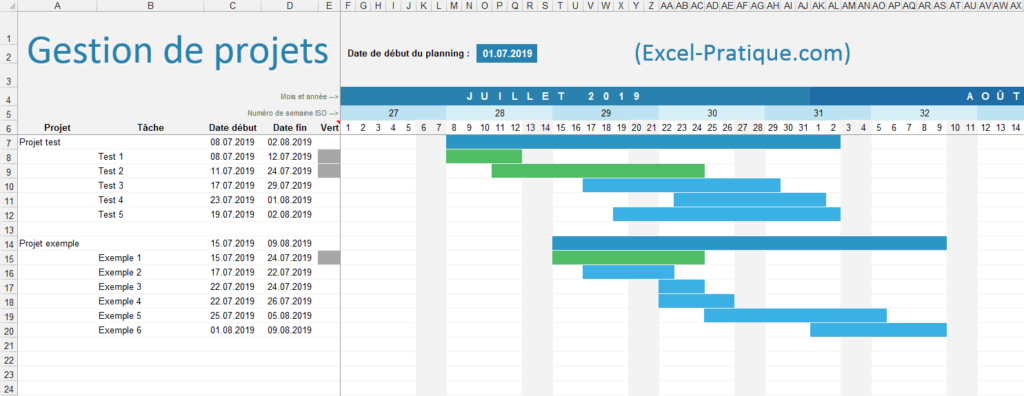In an DSC (digital services company), it’s no longer enough to meet deadlines: you have to plan, control and manage tasks in a structured way. Retroplanning is one of the best tools for project management and planning. Anticipating the unexpected, keeping to the agenda and staying on course becomes an art with these work tools.
Retroplanning: an effective and optimal management tool
In a sector as dynamic and demanding as that of Digital Service Companies (DSCs), time and resource management is not just an organizational issue: it’s a condition of survival. Faced with the multiplication of projects, the diversity of customers and the constant pressure on deadlines, project leaders and project managers need powerful tools for accurate planning.
An essential project management method, the retroplanning tool helps you plan from the delivery date up to the various stages required. It helps anticipate risks, secure critical milestones and involve stakeholders in a structured way. In this way, the project management in DSC brings fewer surprises, greater transparency, and teams that are better prepared to deal with the unexpected. But for this method to be truly effective, you need the right tools. Failing to anticipate dependencies between tasks, or underestimating actual deadlines, can quickly render retroplanning unrealistic.

Retroplanning, a strategic lever for DSCs
The main advantage of retroplanning is that it reverses the classic logic: planning is not done by moving forward, but by going backwards from the target date. This forces you to visualize all the stages essential to the project’s success, to identify critical dependencies and to allocate responsibilities realistically.
This method also makes it possible to involve stakeholders from the outset, by making them aware of time constraints right from the scoping phase.
Complex, often multi-partner projects
DSCs often operate in environments where good project project management is essential, as the missions are carried out in parallel. All have their own technological and commercial constraints. In this context, complexity is the norm. The slightest delay can have a domino effect on several deliverables, or engage the company’s contractual liability.
Coordination therefore becomes a crucial issue. It’s no longer just a matter of dividing up a list of tasks, but of structuring a coherent sequence of interventions within a realistic and engaging time frame. The retroplanning tool meets these different expectations and helps to limit the risk of errors.

Choosing the right DSC retroplanning tool
A good retroplanning tool for DSC is not limited to a simple agenda. It must provide a global view of the project while retaining sufficient granularity to manage technical tasks. Expected functionalities include :
- an intuitive view of the Gantt chart.
- dependency management.
- intelligent notifications
- the ability to integrate business tools (CRM, ERP, etc.).
The ability to work in real time is also decisive: a change in a critical task must immediately be visible to all concerned.
Simplicity of use for a wide range of functions
The most comprehensive tools are not always the most effective, especially if the team doesn’t have the time (or inclination) to train on them. The ideal is to strike a balance between functional power and ease of use.
The chosen task management tool must also be capable of adapting to mixed methodologies Some DSCs use a combination of agile, V-cycle and hybrid methods. Retroplanning must be able to coexist with other management methods.
DSC: retroplanning, the tool to integrate into your ecosystem
The adoption of a new management tool should never be brutal. Starting with a test project allows you to assess the benefits without overturning all your processes. This limits resistance to change, and enables adjustments to be made before global deployment.
Supporting internal change
The success of a tool depends on its ease of use and its ability to facilitate project progress. It is essential to train key users, designate one or more “referents” and document best practices. The aim is to get the tool up and running quickly, without overloading the system.
Measuring tangible benefits
A few simple indicators are all you need to assess the tool’s relevance:
- Meeting deadlines
- Reduce unproductive meetings
- Improving project communication ;
- Improved customer satisfaction thanks to better visibility of progress.
Furious ERP, an integrated solution that goes further
While retroplanning tools are an effective response to one-off or project needs, some DSCs benefit from integrating a more global solution. This is precisely what Furious offers with its Comprehensive ERP designed specifically for digital service companies.
This tool integrates retroplanning into a unified environment, where project management, invoicing, customer relations through a commercial CRM and task tracking coexist in real time. The key advantage? The intelligent centralization of data, which avoids double data entry, improves the traceability of missions and encourages reactivity in the face of unforeseen circumstances.
What’s more, dynamic dashboards provide global visibility on current projects, future expenses and profitability. For a DSC, this is a gain in productivity and transparency, but also a strategic lever for steering growth with precision and agility. The Furious management tool replaces an average of 7 tools, and saves 30% time on back-office tasks.
No more countless spreadsheets to keep track of schedules! Furious helps you manage your DSC and simplifies task management. Book your free demo today.